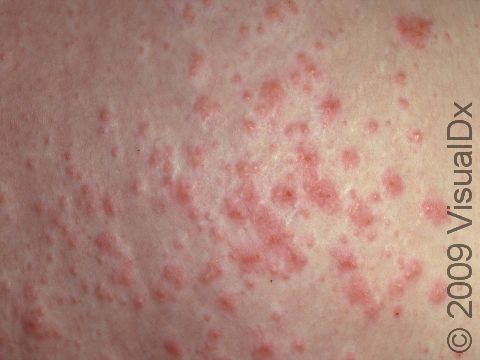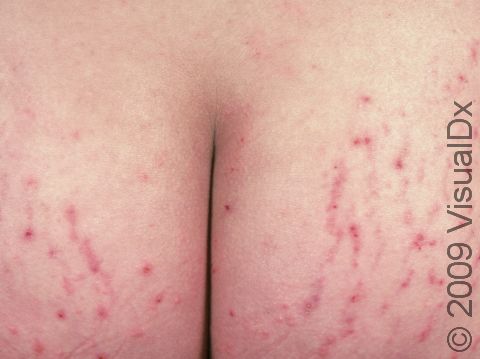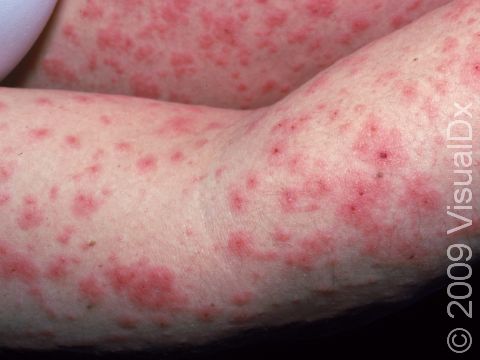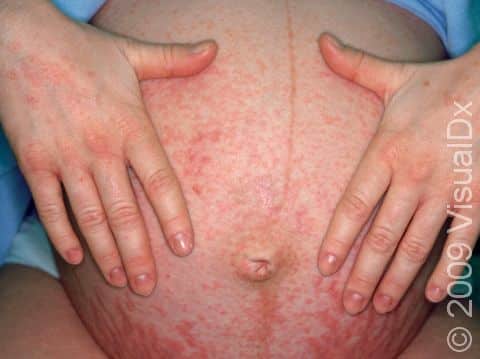Polymorphic Eruption of Pregnancy
Polymorphic eruption of pregnancy (PEP) is the most common skin condition of pregnancy. Typically, individuals affected by PEP develop red, itchy bumps on the belly near stretch marks (striae) during their third trimester of pregnancy. PEP usually improves and eventually goes away on its own within a few weeks after delivery. PEP does not affect the health of your baby and has no long-term consequences for you.
Who's At Risk?
PEP is common in pregnant individuals, occurring in approximately 1 in every 200 pregnancies. The cause is unknown but is thought to be due to increasing hormones, skin stretching, and various reactions of the immune system. PEP usually appears in the third trimester of pregnancy, most often during an individual’s first pregnancy and in pregnancies with multiple babies. PEP typically does not occur in a second or subsequent pregnancies.
Signs & Symptoms
The earliest signs of PEP are itchy, red papules (small, solid bumps) near areas of stretch marks. In darker skin colors, the redness may be harder to see. The papules may spread to other parts of the body, usually to the chest, arms, and legs. The individual papules may get larger and form raised, red areas that look like hives. Although the appearance of the rash can vary and change over time, the main concern is usually the intense itching that accompanies this condition. PEP usually goes away on its own about 1 week after delivery (postpartum) but can disappear anywhere from a week before delivery to up to 6 weeks postpartum.
Self-Care Guidelines
Thick moisturizers can be applied to the rash throughout the day to prevent dryness and help relieve itching. An over-the-counter topical steroid such as hydrocortisone (0.5 or 1%) may be applied to affected areas. An over-the-counter antihistamine such as diphenhydramine (eg, Benadryl) is safe to take during pregnancy and can decrease the itching, but it may make you drowsy. Loratadine (eg, Claritin) and cetirizine (eg, Zyrtec) are other antihistamines that are less likely to make you drowsy and may be helpful during the day.
Treatments
Your medical professional will most likely recommend a steroid cream to apply to the affected areas. In severe cases, they may prescribe an oral steroid to control the itching.
Visit Urgency
See your medical professional for any widespread or spreading itchy rash that develops in pregnancy.
Trusted Links
References
Bolognia J, Schaffer JV, Cerroni L. Dermatology. 4th ed. Philadelphia, PA: Elsevier; 2018.
James WD, Elston D, Treat JR, Rosenbach MA. Andrew’s Diseases of the Skin. 13th ed. Philadelphia, PA: Elsevier; 2019.
Kang S, Amagai M, Bruckner AL, et al. Fitzpatrick’s Dermatology. 9th ed. New York, NY: McGraw-Hill Education; 2019.
Paller A, Mancini A. Paller and Mancini: Hurwitz Clinical Pediatric Dermatology. 6th ed. St. Louis, MO: Elsevier; 2022.
Last modified on June 14th, 2024 at 2:20 pm

Not sure what to look for?
Try our new Rash and Skin Condition Finder



